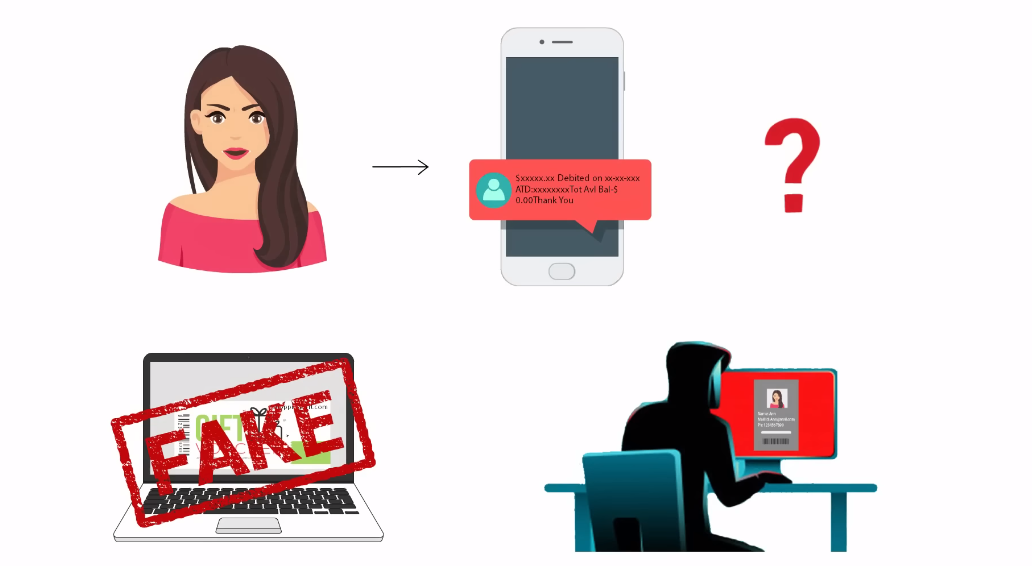Introduction
What Is A Data Secure Interface?
A data secure interface is a means of securely transmitting data between two devices or systems. It involves encrypting the data before it is transmitted, and then decrypting it at the other end to ensure that it remains secure throughout the transmission process.
One common example of a data secure interface is Secure Sockets Layer (SSL) or Transport Layer Security (TLS), which are used to create encrypted connections between web browsers and websites. These protocols ensure that any sensitive information, such as usernames, passwords, and credit card numbers, is transmitted in an encrypted format that cannot be intercepted by unauthorized parties.
Why Is Data Security Important?

Data security is important to protect against cyber attacks. Hackers will often target companies or individuals who have valuable data that can be exploited for financial gain or other malicious purposes. A breach in data security can result in severe consequences such as identity theft, financial loss, and damage to one’s reputation.
Another reason why data security is important is to comply with legal regulations. Many industries are subject to strict regulations regarding how they handle sensitive information. Failure to comply with these regulations can result in hefty fines or even legal action taken against the company or individual responsible for the breach.
Data Security Basics
Overview Of Data Security
Data security is the practice of protecting digital information from unauthorized access, theft, or corruption. With the rise of technology and the internet, data security has become a crucial aspect for individuals and organizations alike. Data breaches can not only lead to financial losses but also damage an organization’s reputation.
There are various measures that individuals and organizations can take to ensure data security. Encryption is one such method that involves converting plain text into coded language to prevent unauthorized access. Firewalls act as barriers between trusted internal networks and untrusted external networks. Access control systems restrict access to sensitive information only to authorized personnel.
It is important to note that data security should be an ongoing process rather than a one-time effort. Regularly updating software, training employees on best practices, and conducting regular audits are some ways of maintaining data security.
Common Types Of Data Security Threats

One common type of threat is phishing, where attackers use fake messages or websites to trick users into providing login credentials or other sensitive information. Another prevalent threat is malware, which can infect systems and collect data without user knowledge. Ransomware attacks are also becoming more frequent, where attackers will encrypt files and demand payment for their release.
Social engineering is another dangerous type of attack where hackers manipulate individuals into divulging confidential data through psychological means rather than technological ones. Additionally, insider threats have become a growing concern in recent years, with employees intentionally or accidentally compromising critical data. These types of threats pose significant risks to any organization’s data security measures and require robust prevention and response strategies to mitigate the damage they could cause if successful.
The Importance Of Securing Data Interfaces
Data secure interfaces are essential for organizations that handle sensitive information such as personal identification numbers (PINs), credit card numbers, and medical records. A data breach can have severe consequences for an organization’s reputation and finances. Therefore, having a secure interface helps minimize the risk of such incidents occurring.
Understanding Data Secure Interfaces
What Is A Data Secure Interface?
A data secure interface is a mechanism that ensures the confidentiality, integrity, and availability of information being transmitted between different systems. It provides a layer of security to protect sensitive data from unauthorized access or compromise. The interface uses various encryption methods to ensure that information remains confidential while in transit.
Different Types Of Data Interfaces
USB interface. It has been around for several decades and is widely used in various devices, including computers, smartphones, cameras, and printers. USB interfaces come in different versions that offer varying speeds and power output capabilities. For instance, the latest USB 3.0 standard offers faster data transfer rates compared to older versions.
Ethernet interface. It is commonly used to connect devices on a local network or over the internet. Ethernet interfaces can transmit large amounts of data at high speeds and are ideal for applications such as video streaming and online gaming. Some devices also use wireless networks like Wi-Fi or Bluetooth to transfer data wirelessly between devices.
There are specialized interfaces designed for specific applications such as HDMI (High-Definition Multimedia Interface) which is used to connect audiovisual equipment like TVs, projectors, and Blu-ray players to other digital devices like computers and gaming consoles. Other examples include Thunderbolt (used mainly for Apple products), FireWire (mainly used in professional audio/video equipment), and SATA (Serial Advanced Technology Attachment) which connects storage devices like hard drives directly to a computer’s motherboard.
How Do Data Secure Interfaces Work?
These interfaces use a combination of encryption techniques, authentication protocols, and access controls to safeguard data. Encryption involves converting plain text into code that can only be deciphered using a particular key. Authentication protocols verify the identity of users before granting them access to confidential data. Access controls limit who can view or modify specific types of information based on predefined rules.
Sophisticated algorithms are used to ensure that these security measures work seamlessly without compromising system performance or user experience.
Factors to Consider When Selecting a Data Secure Interface
Key Considerations When Selecting A Data-Secure Interface
When selecting a data secure interface, it is important to consider the level of encryption and authentication protocols that are in place. The encryption should be strong enough to prevent unauthorized access or tampering with the data being transmitted. It is also important to ensure that the authentication protocols are robust enough to prevent unauthorized users from accessing sensitive information.
Another key consideration when selecting a data-secure interface is compatibility with existing systems and applications. It is important to choose an interface that can seamlessly integrate with existing software and hardware components without causing any disruptions or downtime. Additionally, it may be necessary to consider scalability and future expansion plans when choosing a data-secure interface.
It is essential to evaluate the reliability and support services offered by the vendor providing the data secure interface. This includes assessing their track record in delivering high-quality products as well as their ability to provide timely technical support in case of any issues or concerns.
How To Evaluate The Effectiveness Of A Data Secure Interface?
Evaluating the effectiveness of a data-secure interface is crucial in ensuring that sensitive information remains protected from unauthorized access. One way to gauge its effectiveness is by reviewing compliance with industry standards and regulations, such as HIPAA or GDPR. A secure interface must be designed with these regulatory requirements in mind to ensure that it meets the highest level of security.
Another important factor to consider when evaluating a data secure interface is the architecture of the system itself. The system should feature state-of-the-art encryption technologies along with multi-factor authentication protocols to prevent breaches due to weak passwords or stolen credentials. Additionally, it’s important for companies to conduct regular penetration testing and vulnerability assessments on their systems to identify potential areas of weakness and mitigate them before they can be exploited.
Understanding Compliance Requirements For Data Security
Different industries and organizations may have varying compliance requirements depending on their nature of business and the type of data they handle.
One important compliance requirement for data security is the General Data Protection Regulation (GDPR) which was implemented by the European Union in 2018. This regulation applies to all businesses that process the personal data of EU citizens regardless of their location. It requires companies to implement measures such as encryption, access controls, and regular vulnerability assessments to protect personal data.
Another important compliance requirement is the Health Insurance Portability and Accountability Act (HIPAA) which applies to healthcare organizations in the United States. HIPAA mandates strict privacy rules for patient health information including physical, technical, and administrative safeguards.
Best Practices for Data Secure Interfaces
Best Practices For Designing And Implementing Data-Secure Interfaces
Adopt a layered approach to security: This involves incorporating multiple levels of security controls that work together to protect sensitive information. For instance, authentication mechanisms such as passwords and biometric identification can be coupled with encryption standards like SSL and TLS protocols at the application layer. Additionally, firewalls, intrusion detection systems, and antivirus software can provide an extra layer of protection against malicious activities.
Ensure that all system components are kept up-to-date with regular updates or patches: Unpatched systems can leave vulnerabilities that hackers exploit to access sensitive data. It’s also crucial to minimize access privileges by only allowing authorized personnel access to specific parts of the interface where necessary. This helps prevent unauthorized manipulation or deletion of critical data.
Monitor the interface continuously actively for any suspicious activity: The use of tools like intrusion prevention systems (IPS) and Security Information Event Management (SIEM) solutions can help detect potential threats before they escalate into full-blown attacks on your system.
Tips For Maintaining And Updating Data Secure Interfaces
- Regular updates and maintenance are essential for ensuring the security of data interfaces. It is crucial to keep all software updated with the latest patches and security fixes regularly. Additionally, it is equally important to ensure that all hardware, including servers and firewalls, are kept up-to-date.
- Implementing strong access controls is another way to maintain a secure interface. Providing only necessary access levels based on job roles can help prevent unauthorized data breaches. Password policies should also be in place, such as requiring complex passwords that must be changed regularly.
- Encrypting sensitive data can also add an extra layer of security to interfaces by making it more challenging for hackers to read or steal information. This includes using SSL/TLS encryption for web-based interfaces and encrypting data at rest on storage devices.
How To Train Employees On Data Security Best Practices?

Provide comprehensive training sessions that cover all aspects of data security. This includes educating employees on the importance of password hygiene, how to identify phishing emails, and how to handle sensitive information.
Another way to train employees on data security best practices is through simulated cyber attacks. These simulations allow employees to experience firsthand the consequences of failing to follow proper protocol when handling sensitive information. It also allows them to recognize potential threats and take necessary actions.
Regular reminders and updates can help reinforce good data security habits among employees. Sending out periodic emails or holding brief meetings can be effective in keeping staff aware of current threats and reminding them of what they need to do in order to keep company data secure.
Common Challenges with Data Secure Interfaces
Common Challenges Faced When Implementing Data Secure Interfaces
One of the biggest challenges faced when implementing data-secure interfaces is understanding the complex technical requirements involved. Data security often requires a thorough knowledge of encryption protocols, access controls, and user authentication mechanisms, which can be difficult for non-technical stakeholders to grasp. This can lead to confusion and miscommunication between teams, resulting in delayed or incomplete implementation.
Another challenge is balancing security with usability. While strong security measures such as two-factor authentication and regular password changes are essential for protecting sensitive data, they can also create friction for users who may find them cumbersome or time-consuming. Finding the right balance between security and usability is crucial when designing data-secure interfaces that users will actually want to use.
Maintaining data security over time presents an ongoing challenge that requires constant vigilance and updates. As new threats emerge and technology advances, organizations must stay up-to-date on the latest best practices for securing their data interfaces.
Tips For Troubleshooting Data Secure Interfaces
- Check the Authentication Process: The authentication process is crucial for data security, and it ensures that only authorized personnel can access confidential information. Therefore, if you are experiencing issues with your data secure interface, start by checking the authentication process. Ensure that all users have unique login credentials and passwords that meet password complexity requirements.
- Conduct Regular Audits: Regular audits help identify potential vulnerabilities in a data secure interface before they become bigger problems. You can perform internal audits or hire an external auditor to test the system’s security measures and ensure compliance with industry regulations.
- Monitor Logs: Monitoring logs help detect suspicious activities or unauthorized access attempts on your data secure interface. It is essential to review logs regularly to identify any unusual behavior such as failed login attempts or multiple requests for sensitive information from a single user ID.
- Update Software Regularly: Keeping software up-to-date is crucial for preventing cyber-attacks on your data secure interface. Software updates often include patches for known vulnerabilities, which hackers exploit to gain unauthorized access.
- Use Encryption Techniques: Data encryption techniques make it hard for unauthorized parties to intercept and read sensitive information transmitted over a network connection between two endpoints of your data interface solution such as servers and clients’ devices.
Conclusion
Data-secure interfaces play a crucial role in keeping sensitive information safe from unauthorized access. Organizations need to understand the importance of implementing robust security measures to protect their data and the privacy of their clients. By using secure communication protocols, such as SSL/TLS, businesses can ensure that data transmitted over networks is encrypted and kept confidential.
It’s also essential for organizations to keep their software up-to-date with the latest security patches and updates. This will help prevent attackers from exploiting known vulnerabilities in outdated software versions. Additionally, companies should implement multi-factor authentication (MFA), which requires users to provide two or more forms of identification before accessing sensitive information.
FAQs
How Can I Evaluate The Effectiveness Of A Data-Secure Interface?
When evaluating the effectiveness of a data-secure interface, it’s essential to consider factors such as security protocols, user authentication methods, and data encryption techniques used. A well-designed secure interface should provide users with a clear indication of its security status through visible indicators like lock icons or HTTPS notations. Additionally, it should offer multi-factor authentication options to protect against unauthorized access.
Another critical aspect of evaluating the effectiveness of a data-secure interface is considering its compliance with industry standards and regulations. For instance, if your organization handles payment card information, it must adhere to PCI DSS requirements and have an interface that meets those standards. Similarly, healthcare organizations need to follow HIPAA regulations when handling sensitive patient information.
What Are The Best Practices For Maintaining And Updating Data-Secure Interfaces?
Regularly conduct security checks to ensure that all systems are up-to-date with the latest security patches. This includes conducting vulnerability assessments and penetration testing to identify any vulnerabilities in the system.
Restrict access to sensitive information by implementing strict user permissions and role-based access controls. This will ensure that only authorized personnel have access to critical data, reducing the risk of a breach.
Monitor user activity continuously using security information and event management (SIEM) solutions. These tools track user behavior and provide alerts on suspicious activities such as failed login attempts or unauthorized file transfers, allowing IT teams to respond quickly before any damage occurs.
